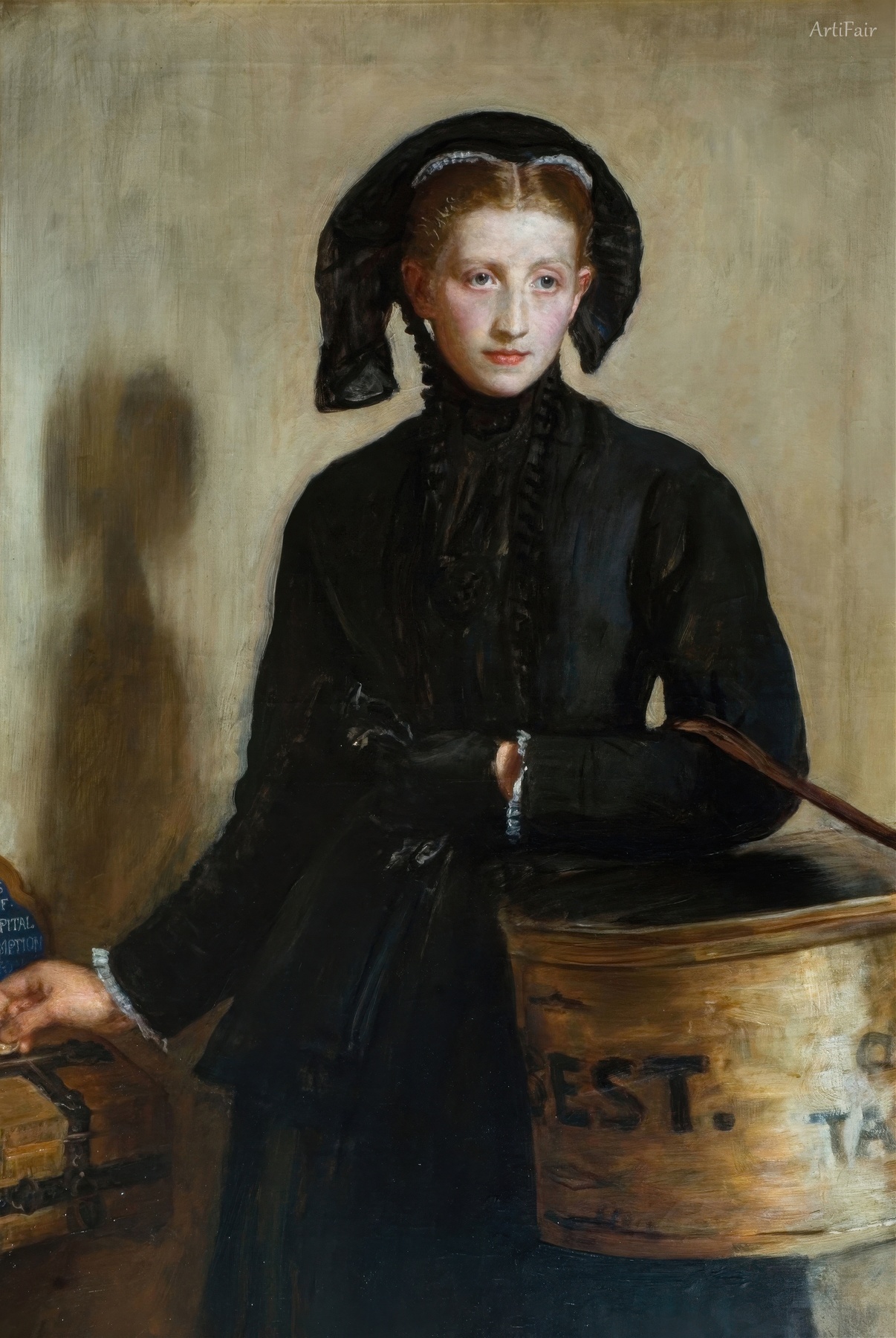
Art Appreciation
In this poignant artwork from the late 19th century, the viewer is met with a captivating portrait of a young woman dressed in mourning attire, her somber expression rich with emotion. She stands slightly turned, her gaze directed outwards, inviting us into her solemn world. The depth of her black dress contrasts starkly against her pale complexion, highlighting her delicate features; her braided hair, a testament to the era, is tucked neatly beneath a dark shawl that frames her face elegantly. This framing serves to emphasize the emotional weight she carries, echoed by the subtle but prominent basket at her side, marked with the letters 'EST.'—a symbol that elicits curiosity and contemplation about her story.
The brushwork displays Millais’ remarkable technique, with deft strokes that capture both texture and light, giving a life-like vibrancy to the scene. The background, muted compared to the subject, enhances her presence, almost as if she were a memory rising from a forgotten past. The color palette is dominated by deep blacks and browns, adding a layer of gravity and a sense of introspection, as if to echo the mourning custom of her time. Each element in this canvas contributes to an emotional narrative, prompting the viewer to feel the weight of loss and reflection, tugging at the heartstrings in a most compelling way. Millais invites us into this intimate moment, beckoning us to ponder the stories held within the silence of the painted figure. The significance of this piece lies not just in its aesthetic beauty, but in its exploration of human emotion and social conditions of the late Victorian era, where expressions of grief and remembrance were sacred parts of life.